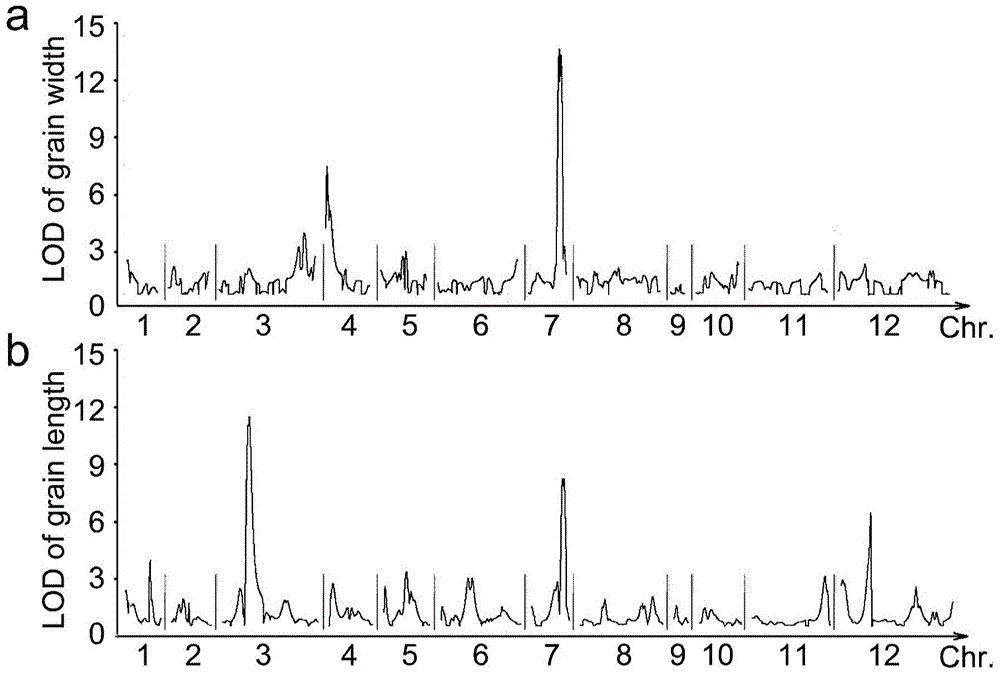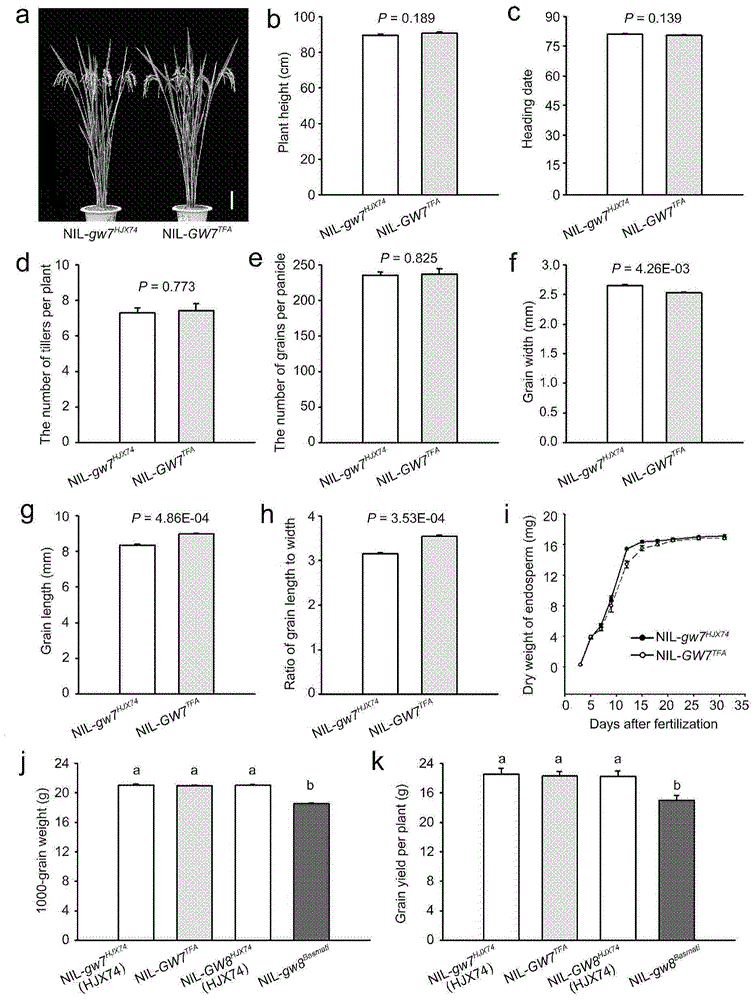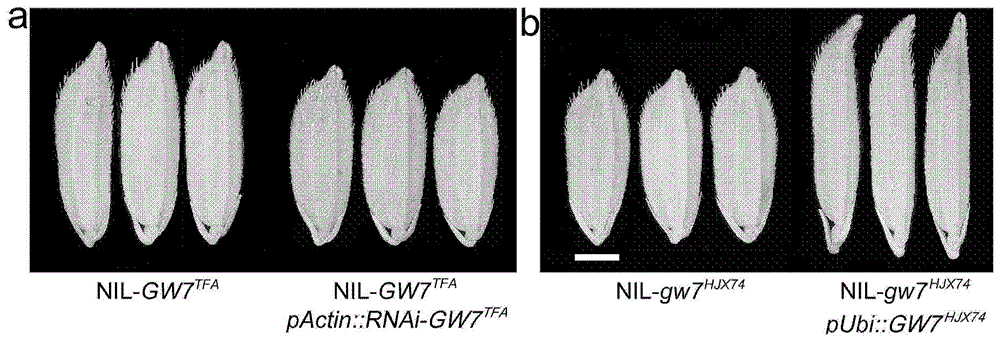Gene GW7 for controlling grain shape, exterior quality and yield of rice and applications of gene GW7
A rice and genetic technology, applied in the fields of botany and biology, can solve the problems of high yield, low quality, neglect of quality improvement, etc.
- Summary
- Abstract
- Description
- Claims
- Application Information
AI Technical Summary
Problems solved by technology
Method used
Image
Examples
Embodiment 1
[0124] Example 1: Acquisition of rice grain type main effect QTL-qGW7
[0125] Minghui 63 and Zhenshan 97 are the parent materials widely used in hybrid rice breeding in my country. Minghui 63 is currently the most widely used restorer line material, and Zhenshan 97A is the most widely used sterile line. Shanyou 63 bred with the two parents is the most popular hybrid rice variety in my country. This variety has excellent yield but poor rice quality. Taifeng A is a high-quality sterile line material bred in South China in recent years. Its grain aspect ratio, chalkiness and other important appearance quality traits have reached the first grade of the national standard.
[0126] The inventor used Zhenshan 97B (bred by Wenzhou Institute of Agricultural Sciences, presented by Mr. Liu Yaoguang, School of Life Sciences, Wushan South China Agricultural University, Tianhe District, Guangzhou) as the female parent and Taifeng A (high-quality rice plant used by the Rice Institute of Gua...
Embodiment 2
[0133] Embodiment 2: Obtaining of rice grain type gene GW7
[0134] The inventors used Taifeng A (Guangdong Provincial Academy of Agricultural Sciences Rice Institute to use the high-quality rice line Mi 31 and (Bo B / Zhe 9248) F8 high-quality line to cross, and then through 8 generations of backcrossing to produce a high-quality indica rice male sterile line ) and Huajingxian 74 (a high-yielding rice variety bred by the Department of Agronomy of South China Agricultural University, approved in 2000 in Guangdong Province, and presented by Mr. Zhang Guiquan from the Agricultural College of Wushan South China Agricultural University, Tianhe District, Guangzhou City) and combined with continuous multi-generation backcross Constructed BC 3 f 2 group. On this basis, the GW7 gene was cloned using the map-based cloning technique. The polymorphic marker primer sequences used in the map-based cloning are shown in Table 3, and the detection method of the polymorphic marker is as descri...
Embodiment 3
[0138] Example 3: Construction of near isogenic line materials NIL-GW7 and NIL-gw7
[0139] The BC described by the inventor in Example 2 3 f 2 The individual plants containing qGW7 and slender grain were selected in the population and continued to be backcrossed with Huajingxian 74 for multiple generations to BC 6 f 2, Individual plants were selected according to the phenotype of elongated and narrowed grains, and molecular markers were used to track and detect the target segment, and background scanning was performed on the segments other than the target traits, and finally the genetic background of Huajingxian 74 (NIL-gw7) was obtained. The very close near-isogenic line NIL-GW7 material was used for follow-up research. The molecular marker detection method is the same as that described in Example 1.
PUM
 Login to View More
Login to View More Abstract
Description
Claims
Application Information
 Login to View More
Login to View More - R&D
- Intellectual Property
- Life Sciences
- Materials
- Tech Scout
- Unparalleled Data Quality
- Higher Quality Content
- 60% Fewer Hallucinations
Browse by: Latest US Patents, China's latest patents, Technical Efficacy Thesaurus, Application Domain, Technology Topic, Popular Technical Reports.
© 2025 PatSnap. All rights reserved.Legal|Privacy policy|Modern Slavery Act Transparency Statement|Sitemap|About US| Contact US: help@patsnap.com



